In a possible glimpse of the future of naval warfare, an apparently new type of very small unmanned surface vessel, the ADARO, has been operating with U.S. Navy surface combatants during exercises off the coast of Southern California. The drone boat, which is reminiscent of a waterborne version of a mouse droid from Star Wars, is apparently intended, at least in part, to extend intelligence, surveillance, and reconnaissance (ISR) coverage for the fleet when operating in regions close to the coast.
These maneuvers, which The War Zone reported on here, are known as the Unmanned Integrated Battle Problem 21, or UxS IBP 21, and they focus on bringing together manned and unmanned participants, including surface vessels and aircraft.
Photos released yesterday show the diminutive ADARO cutting through the waves off the bow of the newest Littoral Combat Ship USS Oakland, LCS-24, while the warship is at anchor. Another view shows the drone operating in the same U.S. Pacific Fleet exercise with the San Antonio class amphibious transport dock USS Anchorage (LPD-23) underway in the background.
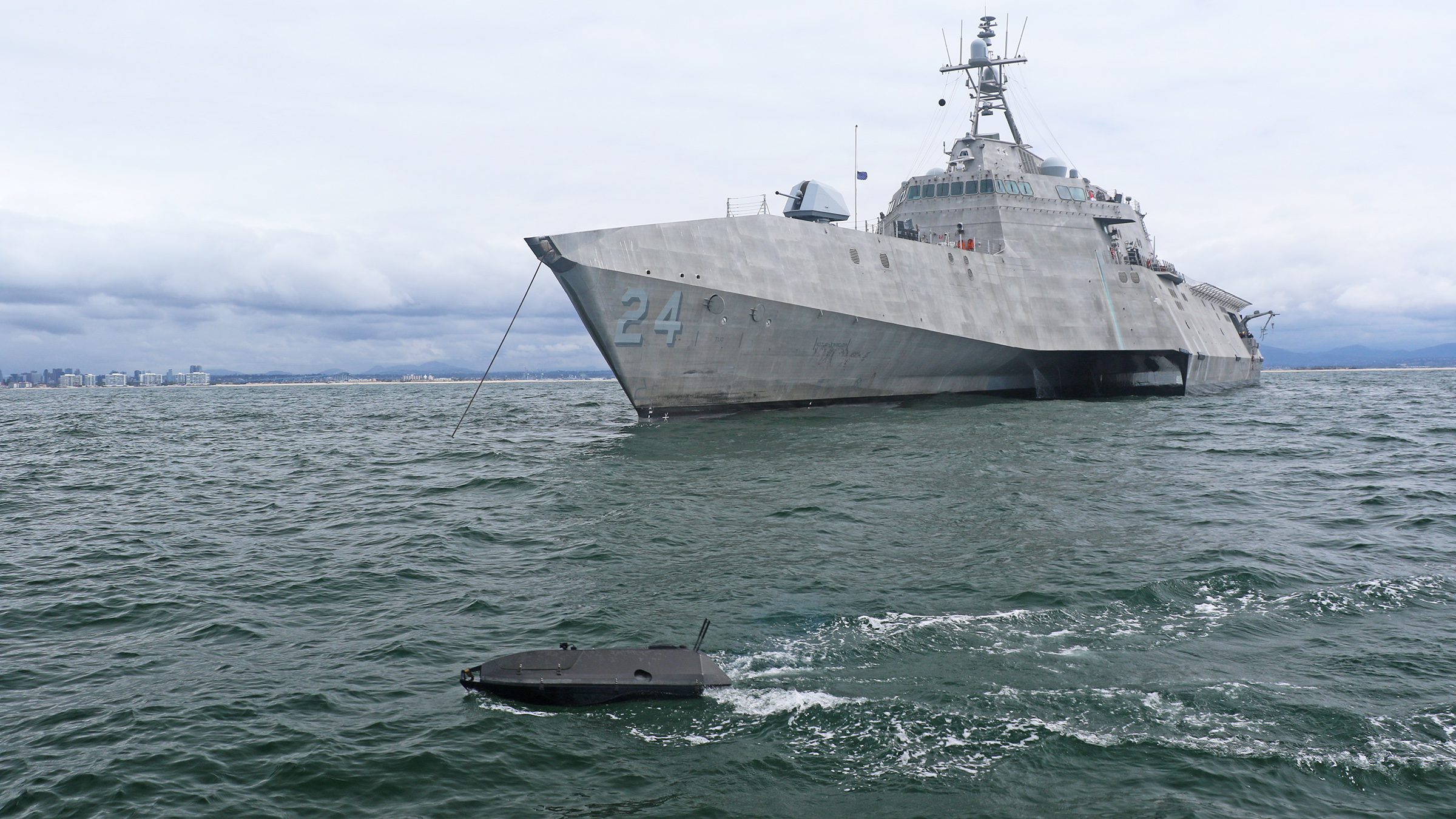
According to the provided captions, the unmanned surface vessel (USV) was “interacting” with both these warships. ADARO appears to be an acronym, but no explanation of its meaning is provided.
Manufactured by SeaLandAire, the ADARO is a product of the Small Business Innovation Research (SBIR) program, a government initiative to support small businesses in research and development. The waterborne drone is around three feet long, weighs some 20 pounds, and is driven by a hybrid energy powerplant.
The hybrid powerplant can supply electric-only propulsion for quiet, high-speed operations, and use heavy fuel for longer-range movements. The ADARO reportedly can reach a speed of up to 25 knots and has a range of up to 230 miles.
The drone can be controlled manually or autonomously and, although it has not been described as a stealth vessel, its minimal profile and tiny size, as well as composite construction, would certainly make it difficult to detect.
ADARO is also a modular platform designed to readily accommodate various payloads. The Navy has not specified how it is configured for this particular experiment.
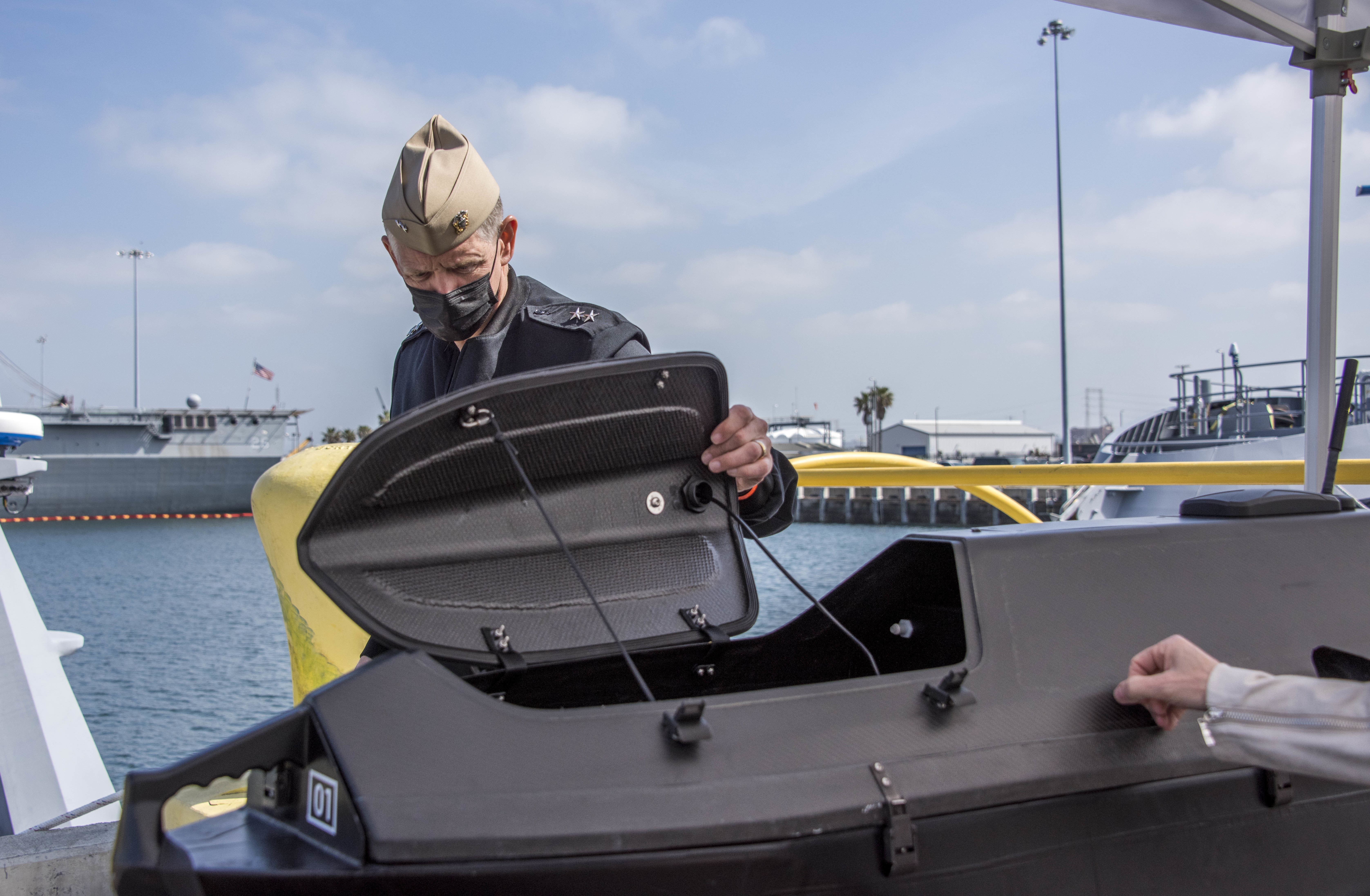
We know that one of the payload options for the drone is an Ultra-Blade L-band electronically steerable array (ESA) satellite communications antenna provided by the Israel-based Get SAT. According to a joint press release from SeaLandAire and Get SAT last year, the Navy is expected to use the Ultra-Blade on ADARO to provide high-capacity, beyond-line-of-sight communications during command and control and ISR missions, including relaying full-motion video. At the same time, the ESA antenna could be used to transmit data gathered by any sensors aboard the ADARO, too.
“Reducing risk to force and risk to mission by removing the USV operator from the area of operation, the BLOS [beyond-line-of-sight] ADARO will make a significant impact to mission planning and approvals in high-risk environments,” the two companies stated in last September’s press release.
The photos that have been released so far suggest the example being used in this latest experiment has a forward-facing camera, as well as various antennas, on top.
According to a USNI News story back in 2017, the ADARO was originally developed with a view to using it in support of explosive ordnance disposal technicians, Marines, or special operations forces, which already make use of small-scale drones. Indeed, the ADARO seems to be very well suited to scouting for special operations teams, such as reconnoitering beaches or ports. The Navy has previously described its primary mission as ISR, as well.
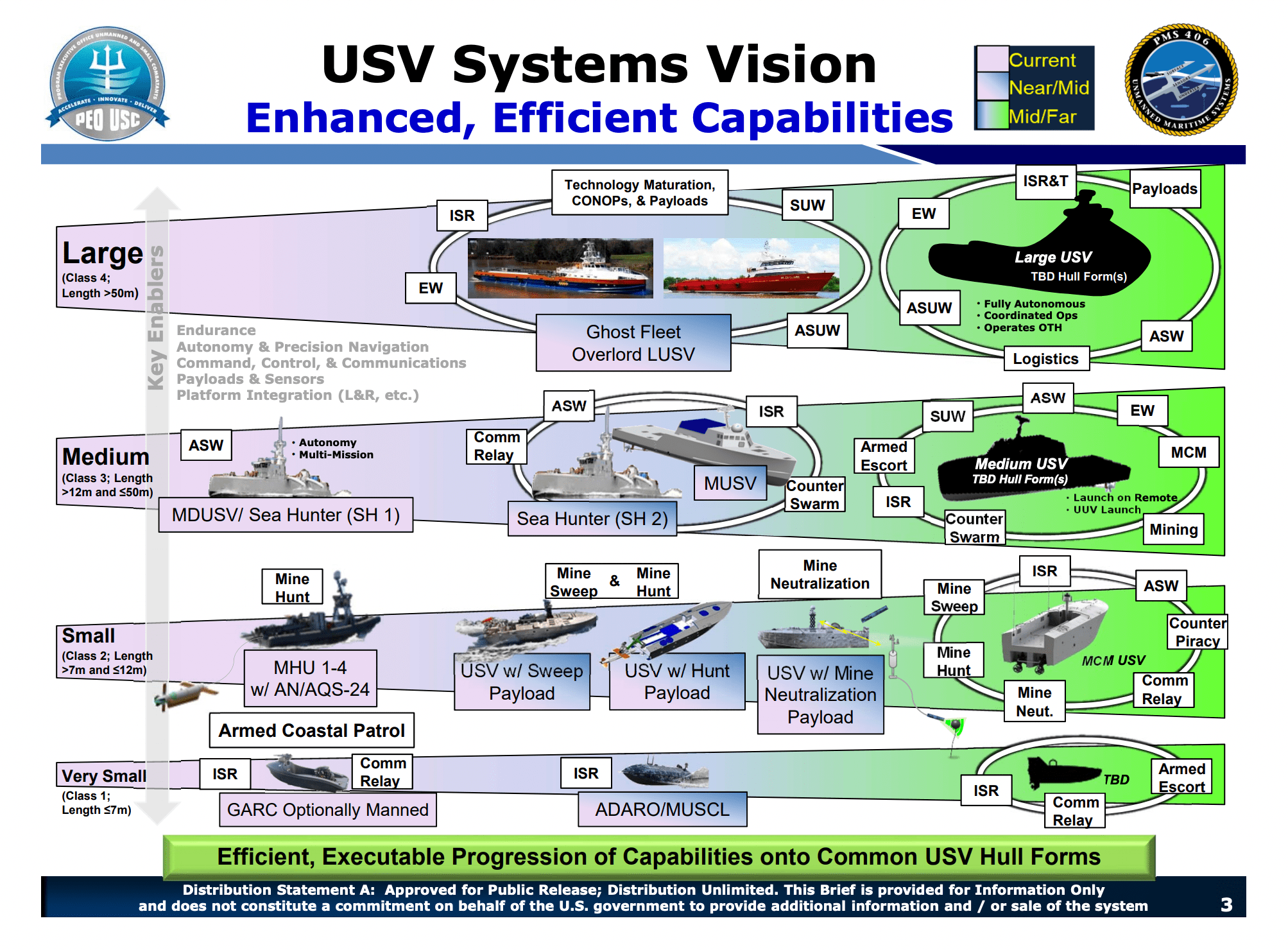
“If you look at the special forces guys, they’re looking for something that they can plop in the water quickly to be able to go do reconnaissance or other communications-type things they want to do,” Captain Jon Rucker, the unmanned maritime systems program manager within the Program Executive Office for Littoral Combat Ships, told
USNI News at the time.
“So this particular craft — just like anything we put in the water first, the company developing it improved the engines, improved the efficiency, got it to be a little more watertight so if it hits a wave it flips over and rights itself — they improved all that,” Rucker added.
In the past, the Navy has also drawn a direct link between ADARO and another project called the Modular Unmanned Scouting Craft, Littoral (MUSCL), which was carried out by a team including the Naval Surface Warfare Center Carderock Division and Naval Surface Warfare Center Panama City Division. This is how the service had described the concepts of operation behind MUSCL in 2012:
MUSCL is a man-portable unmanned surface vehicle platform for riverine combatant craft support. It will be employed as a waterborne “point man” to increase situational awareness during operations on inland waterways. It supports the Navy Expeditionary Combat Command requirements and is capable of carrying different sensors and payloads to provide a variety of capabilities such as intelligence, surveillance, reconnaissance and threat detection.
The Navy’s 2017 Fiscal Year budget proposal describes MUSCL in a similar fashion:
The Modular Unmanned Scouting Craft Littoral (MUSCL), is man-portable “X-Class” Unmanned Surface Vehicle providing enhanced surveillance and reconnaissance capability to Naval Expeditionary Combat Command (NECC) Riverine forces.
MUSCL was itself a “spin-off” of an earlier effort called the Unmanned Reconnaissance Observation Craft, according to an annual review of work the Pentagon’s Combating Terrorism Technical Support Office (CTTSO) had conducted in 2008. Recently renamed the Irregular Warfare Technical Support Directorate (IWTSD), this office has been responsible for the rapid development of various advanced or otherwise novel capabilities, with a particular focus on providing new technology for special operations forces.
Multiple experimental MUSCL craft were developed and at least one was actually delivered to Navy riverine forces in 2011. It’s unclear if that particular drone boat was ever employed operationally or if other MUSCL designs were fielded.
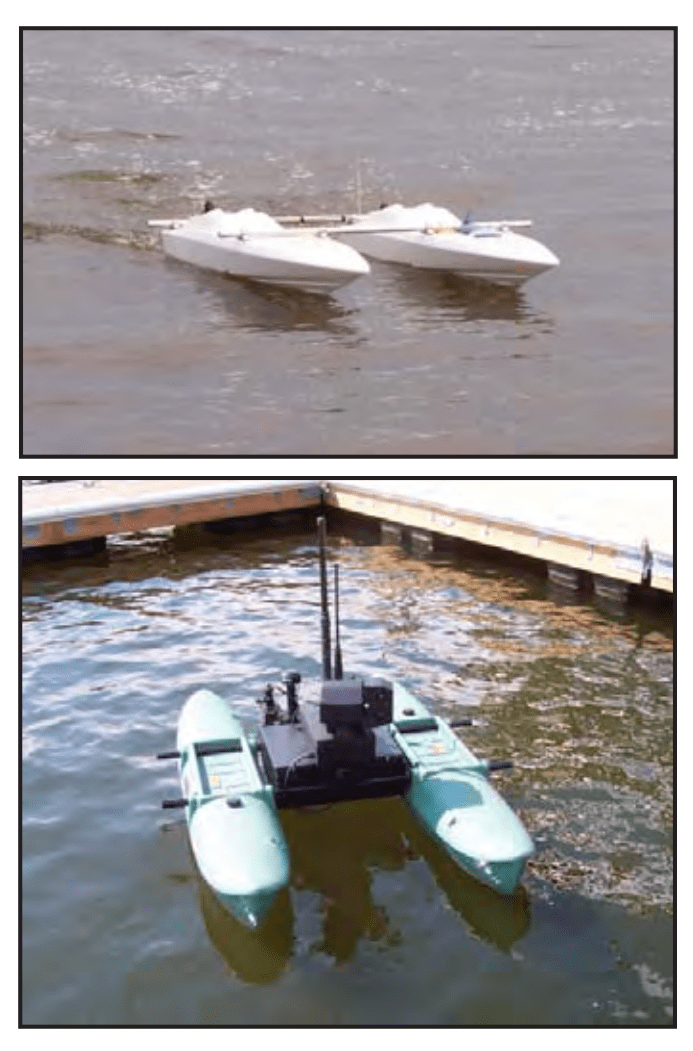
By every indication, the ADARO program appears to be an outgrowth of these earlier projects, and the concepts underpinning them, which has now reached a greater level of maturity.
By deploying ADARO during UxS IBP 21, the Navy is providing yet more evidence that that unmanned platforms are fast becoming a key component of these kinds of large-scale maritime combat scenarios. Increasingly, drones, both in the air and on the surface, and even below it, are serving as sensor nodes for spotting, as well as targeting enemy assets.
The War Zone has explored only recently the advantages offered by using sensors on unmanned platforms to undertake targeting at standoff ranges, especially in the kinds of more heavily defended areas that the Navy might be expected to fight in, in the future.
Once those kinds of assets are organized as drone swarms, their potential is only increased, with the ability to reconnoiter a much larger area, more quickly.
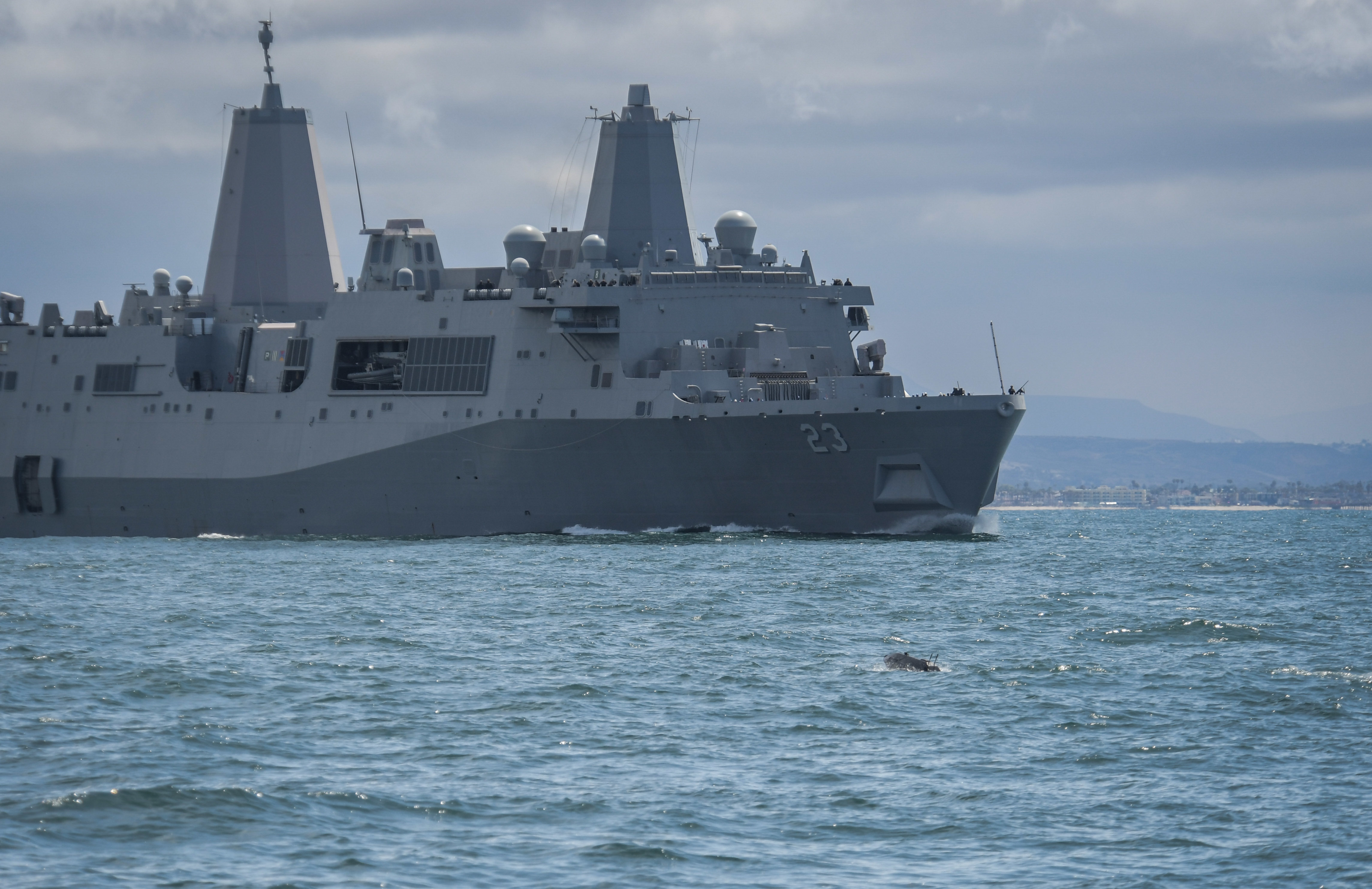
In addition to helping prosecute the kinds of attacks envisaged in UxS IBP 21, or to gather ISR, drones like ADARO could potentially also be used to actively engage enemy assets themselves, especially when deployed in large numbers. They could be outfitted as decoys, either jamming or spoofing enemy defense systems, or perhaps even be fitted with explosive payloads as “suicide drones.”
This is the type of scenario that the Navy is already examining under its Netted Emulation of Multi-Element Signature against Integrated Sensors (NEMSIS) program, which The War Zone was first to report on and that you can read about more here. This would bring together a team of manned and unmanned platforms that between them could spoof various opponents’ sensors over a wide area by generating phantom fleets of aircraft and ships.
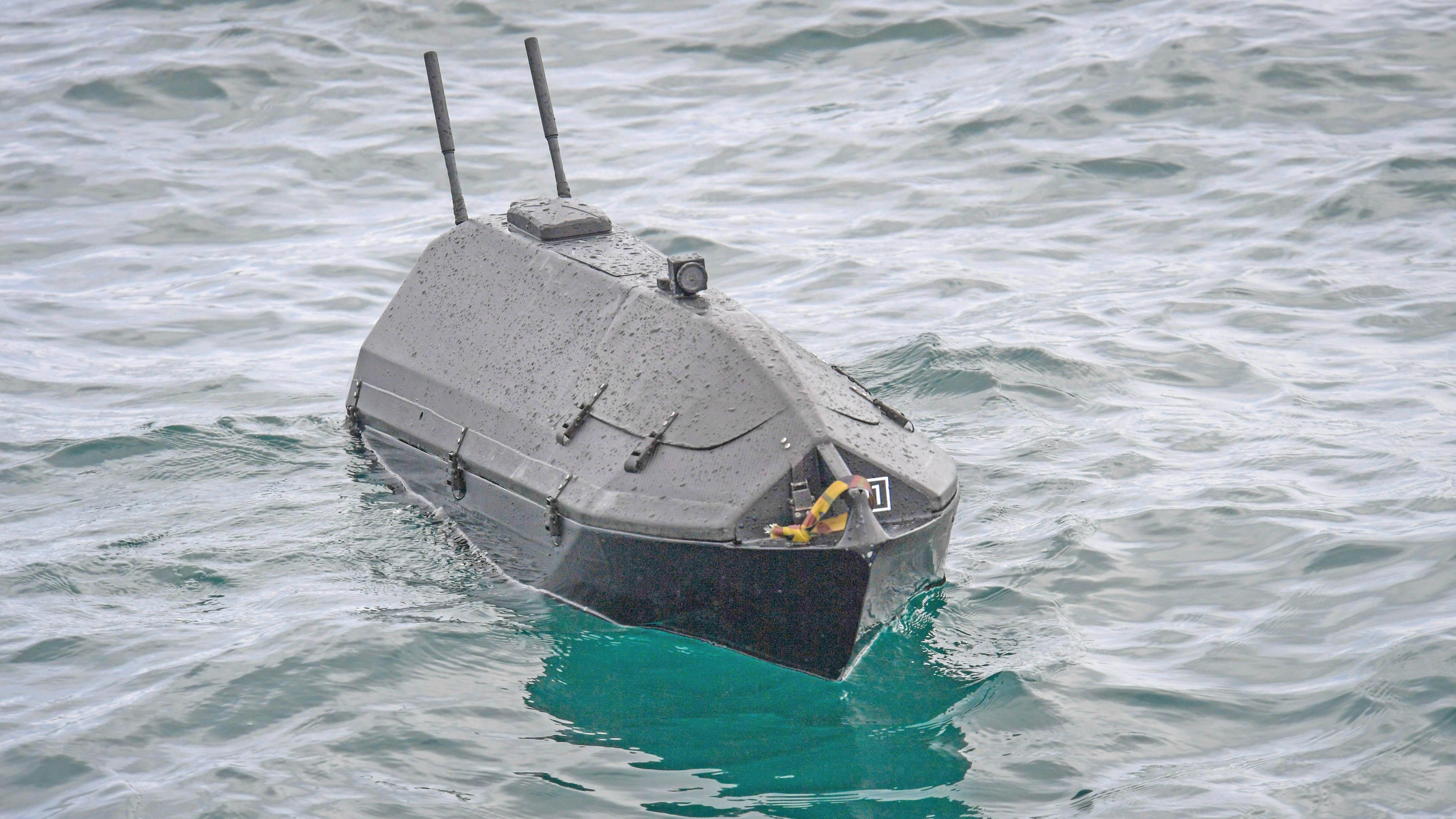
The Navy is also already working on programs to equip future unmanned surface vessels and undersea vehicles to launch drone swarms. Think of a Medium Displacement Unmanned Surface Vessels (MDUSV), for instance, patrolling the seas for potentially months at a time, deploying swarms of ADARO-sized drones when required.
There is a swarming element in the UxS IBP 21 exercise, too, which is connected to a secretive initiative known as Super Swarm, which is understood to focus on using large numbers of drones to test these kinds of capabilities. What little is known about Super Swarm now is primarily focused on aerial drones, but we also know that it includes work on USVs and unmanned underwater vehicles (UUV), as well.
Otherwise, we don’t know a great deal about the specifics of manned/unmanned projects that will be tested during UxS IBP 21. We do know that, in addition to the Super Swarm component, the exercise will include two parts that look specifically at ISR and manned-unmanned teaming concepts of operation. Clearly, ADARO could have applications for both of those, with a modular payload capability offering potential to carry different sensors, and the fact we know that the drone is “interacting” with manned surface vessels, at least, during the exercise.
There will also be some kind of missile launched at a surface target during the maneuvers, using information from a combination of manned and unmanned aircraft and surface vessels.
“I would tell you the one I’m most interested in and that I think is probably most challenging is we’re going to use a combination of manned and unmanned assets in order to get after a target and provide a targeting solution,” Navy Rear Admiral James Aiken, the top officer overseeing UxS IBP 21, told reports last week.
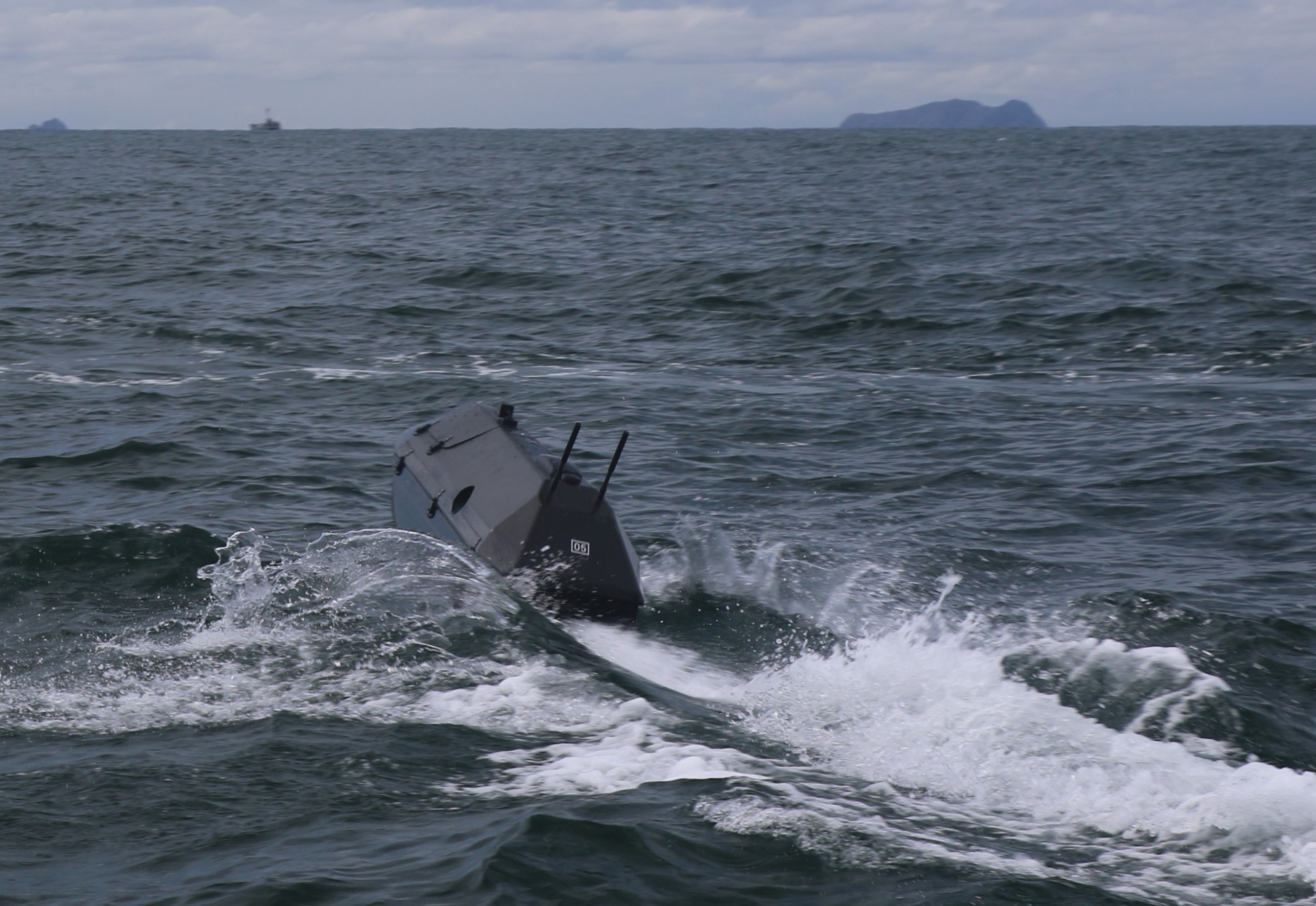
So far, it’s not clear what missile will be employed, what platform will launch it, or what assets will be used to gather the targeting data, but there could be a role for ADARO in this kind of scenario, too.
We await with interest to see exactly how ADARO is being utilized in these ongoing war games off Southern California, and how it might be used in the future to collaborate with manned vessels and potentially other platforms too.
Contact the author: thomas@thedrive.com
